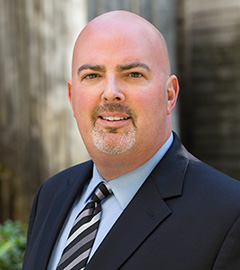Understanding Proximate and Superseding Causes
Posted Friday, April 20, 2018 by Chris Thayer
In July 2011, a Washington neurosurgeon named Michael Thomas performed spinal surgery on a scoliosis patient. The patient filed a lawsuit in 2015, claiming that the doctor failed to provide adequate post-operative care and that she was in chronic pain for three years until another surgeon corrected the issue. In July 2017, a Washington jury found that Thomas’s negligence was the proximate cause of the patient’s injuries and awarded her $1.2 million in damages.
*What is Proximate Cause?*Proving that the defendant’s negligence actually caused your injuries is an important step toward winning your medical malpractice or personal injury lawsuit. This is called “proximate cause.” According to Washington’s pattern jury instructions, proximate cause means “a cause which in a direct sequence [unbroken by any superseding cause,] produces the [injury] [event] complained of and without which such [injury] [event] would not have happened.”
There are two elements of proximate cause - cause in fact and legal causation.
Cause in fact refers to the connection between the defendant’s conduct and the injury. In other words, “cause in fact” means that the injury would not have happened “but for” the defendant’s conduct. Legal causation asks whether the defendant should be held responsible for his injurious conduct. In most cases in which the defendant owes the plaintiff a duty of care (for example, drivers owe a duty to other drivers and to pedestrians to follow traffic laws), the answer to that question is yes.
Note that there can be more than one proximate cause, which can complicate a personal injury lawsuit.
*What if There is a Superseding Cause?*Remember that proximate cause requires conduct “unbroken by any superseding cause.” A superseding, or intervening, cause only breaks the chain of causation if it was unforeseeable. For example, imagine that a city fails to fill in a pothole and a car’s tire is damaged after driving over it. That driver pulls over on the side of the road and is struck by another vehicle. This is a foreseeable scenario that would not break the chain of causation.
However, now imagine that the driver pulls over on the side of the road and another car pulls up beside him. The driver of the second car pulls out a gun and shoots the first driver. That is an unforeseeable intervening cause, and the city would not be responsible for the damages caused by the second driver.
*Filing a Personal Injury Claim in Washington*The statute of limitations, or deadline, for filing a personal injury lawsuit in Washington is three years from the date of the act (or failure to act) that caused the injury. This includes medical malpractice claims. Contact an experienced attorney as soon as possible; the sooner you file your claim the less likely it is that crucial evidence will become lost.
*Contact Us Today*Contact one of our personal injury attorneys today for a free consultation if you were injured by someone else’s negligence. Our experienced attorneys will examine the facts of your case and help prove that this negligence was the proximate cause of your injuries.
